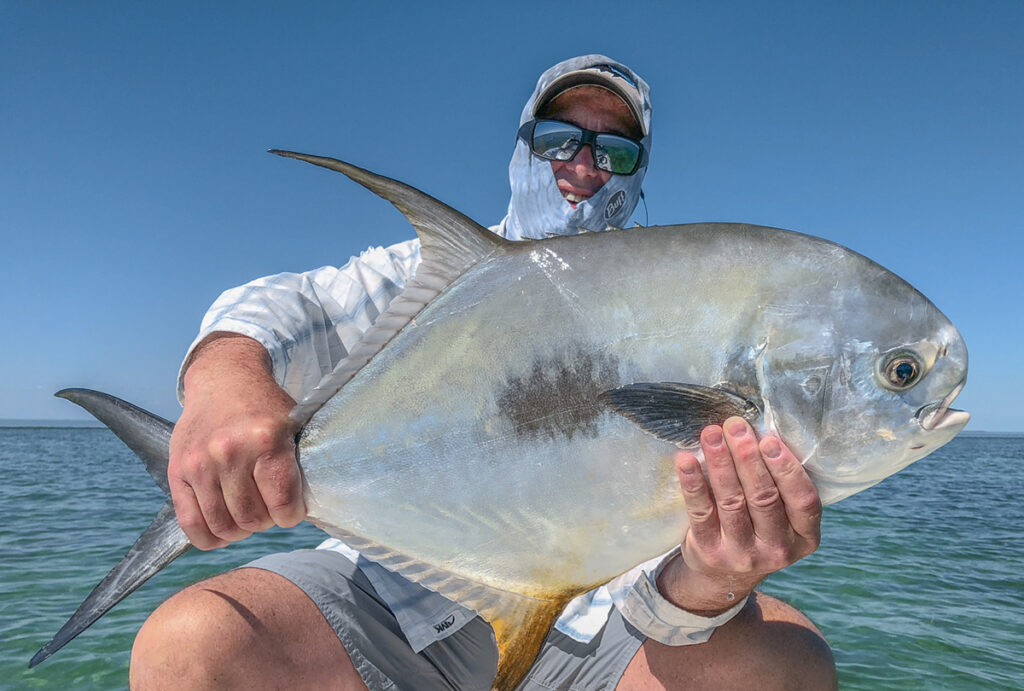Email Cell -305.393.1245
HOME » Permit

Permit are the elusive, unpredictable gladiators of the flats. Known for their wariness and tenacity, they’re often hailed as the crown jewel of saltwater fly and spin fishing, completing the “Florida Keys Grand Slam” alongside bonefish and tarpon.
Permit typically weigh between 12 and 25 pounds, but don’t be surprised if you cast to a 35-pound tank – it’s not exactly rare. Permit patrol the deeper edges of flats and banks during lower tides, while higher tides see them tailing and feeding on top. You’ll also find them following rays, on reefs, wrecks, coral heads, and sometimes floating the surface in huge schools.
In South Florida permit roam from Biscayne Bay to Key West, the Marquesas, and Florida Bay, but their passports extend to the east and west coasts of Florida, the Bahamas, Mexico, and Central America. They’re here year-round, but spring and fall are prime time, especially after a warming trend following a cold front. Windy days are your friend, permit let their guard down a bit, so you don’t need a presentation worthy of an Olympic gymnast.
Permit have a sophisticated palate. Crabs, shrimp, mollusks, and baitfish are their main course, but sea urchins also make the menu for the older, more solitary diners. Juvenile permit start with plankton and work their way up to heartier food. When targeting permit on fly, crab patterns are the go-to, designed to mimic retreating crabs heading for the bottom. In short, permit are the ultimate saltwater challenge, smart, strong, and always ready to humble even the most skilled angler. But when you finally land one, it’s a story worth telling.
9 to 10-weight fly rods paired with a floating or clear floating fly line is the standard setup for targeting permit in the Florida Keys. While a 9-weight is the most common choice, a 10-weight rod can be useful on particularly windy days or when casting larger, weighted flies with greater accuracy.
I use 9 to 12-foot tapered leaders with fluorocarbon tippets ranging from 12 to 20-pound test for optimal stealth and abrasion resistance.
A well-stocked fly box for permit should include a variety of crab patterns, such as:
Additionally, shrimp and baitfish patterns like Clouser Minnows can be effective in certain conditions. The ability to present the fly at different depths is key, so carrying a mix of weighted and unweighted flies is essential. Fly sizes typically range from #1 to #2 and #1/0.
7-foot or longer fast-action spinning rods paired with a high-quality spinning reel with a strong, smooth drag system is ideal.